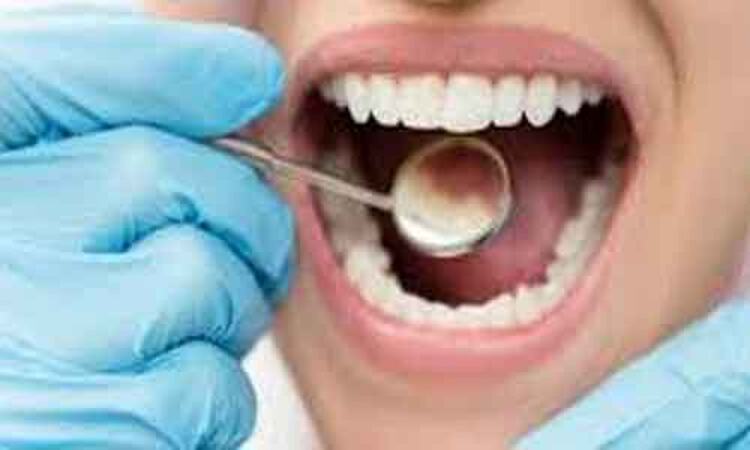- Home
- Medical news & Guidelines
- Anesthesiology
- Cardiology and CTVS
- Critical Care
- Dentistry
- Dermatology
- Diabetes and Endocrinology
- ENT
- Gastroenterology
- Medicine
- Nephrology
- Neurology
- Obstretics-Gynaecology
- Oncology
- Ophthalmology
- Orthopaedics
- Pediatrics-Neonatology
- Psychiatry
- Pulmonology
- Radiology
- Surgery
- Urology
- Laboratory Medicine
- Diet
- Nursing
- Paramedical
- Physiotherapy
- Health news
- Fact Check
- Bone Health Fact Check
- Brain Health Fact Check
- Cancer Related Fact Check
- Child Care Fact Check
- Dental and oral health fact check
- Diabetes and metabolic health fact check
- Diet and Nutrition Fact Check
- Eye and ENT Care Fact Check
- Fitness fact check
- Gut health fact check
- Heart health fact check
- Kidney health fact check
- Medical education fact check
- Men's health fact check
- Respiratory fact check
- Skin and hair care fact check
- Vaccine and Immunization fact check
- Women's health fact check
- AYUSH
- State News
- Andaman and Nicobar Islands
- Andhra Pradesh
- Arunachal Pradesh
- Assam
- Bihar
- Chandigarh
- Chattisgarh
- Dadra and Nagar Haveli
- Daman and Diu
- Delhi
- Goa
- Gujarat
- Haryana
- Himachal Pradesh
- Jammu & Kashmir
- Jharkhand
- Karnataka
- Kerala
- Ladakh
- Lakshadweep
- Madhya Pradesh
- Maharashtra
- Manipur
- Meghalaya
- Mizoram
- Nagaland
- Odisha
- Puducherry
- Punjab
- Rajasthan
- Sikkim
- Tamil Nadu
- Telangana
- Tripura
- Uttar Pradesh
- Uttrakhand
- West Bengal
- Medical Education
- Industry
High-volume evacuation with intraoral suction devices reduce microbial aerosols during scaling: Study

According to recent research published in the Journal of American Dental Association, it has been observed that the combination of high-volume evacuation (HVE) and intraoral suction devices significantly decreases microbial aerosols during oral prophylaxis procedures.
The route of transmission of severe acute respiratory syndrome coronavirus 2 has challenged dentistry to improve the safety for patients and the dental team during various treatment procedures.
Therefore, Montry S. Suprono and colleagues from the Loma Linda University School of Dentistry, Loma Linda, California, USA conducted the present study with the purpose to evaluate and compare the effectiveness of dental evacuation systems in reducing aerosols during oral prophylactic procedures in a large clinical setting.
This was a single-center, controlled clinical trial using a split-mouth design. A total of 93 student participants were recruited according to the inclusion and exclusion criteria. Aerosol samples were collected on blood agar plates that were placed around the clinic at 4 treatment periods: baseline, high-volume evacuation (HVE), combination (HVE and intraoral suction device), and posttreatment.
Student operators were randomized to perform oral prophylaxis using ultrasonic scalers on 1 side of the mouth, using only HVE suction for the HVE treatment period and then with the addition of an intraoral suction device for the combination treatment period.
Agar plates were collected after each period and incubated at 37 °C for 48 hours. Colony-forming unit (CFU) counts were determined using an automatic colony counter.
The following key findings were highlighted-
- The use of a combination of devices resulted in significant reductions in CFUs compared with the use of the intraoral suction device alone (P < .001).
- The highest amounts of CFUs were found in the operating zone and on patients during both HVE and combination treatment periods.
Therefore, the authors concluded that "significant reductions in the amount of microbial aerosols were observed when both HVE and an intraoral suction device were used."
Furthermore, they inferred that the combination of HVE and intraoral suction devices significantly decreases microbial aerosols during oral prophylaxis procedures.
Dr. Nandita Mohan is a practicing pediatric dentist with more than 5 years of clinical work experience. Along with this, she is equally interested in keeping herself up to date about the latest developments in the field of medicine and dentistry which is the driving force for her to be in association with Medical Dialogues. She also has her name attached with many publications; both national and international. She has pursued her BDS from Rajiv Gandhi University of Health Sciences, Bangalore and later went to enter her dream specialty (MDS) in the Department of Pedodontics and Preventive Dentistry from Pt. B.D. Sharma University of Health Sciences. Through all the years of experience, her core interest in learning something new has never stopped. She can be contacted at editorial@medicaldialogues.in. Contact no. 011-43720751
Dr Kamal Kant Kohli-MBBS, DTCD- a chest specialist with more than 30 years of practice and a flair for writing clinical articles, Dr Kamal Kant Kohli joined Medical Dialogues as a Chief Editor of Medical News. Besides writing articles, as an editor, he proofreads and verifies all the medical content published on Medical Dialogues including those coming from journals, studies,medical conferences,guidelines etc. Email: drkohli@medicaldialogues.in. Contact no. 011-43720751


